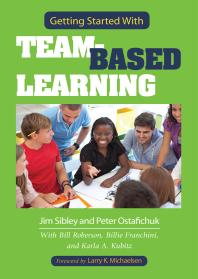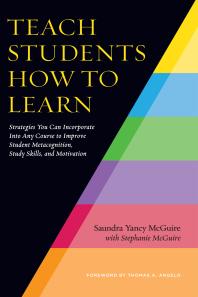
 Getting Started with Team-Based Learning
by
Jim Sibley; Pete Ostafichuk; Larry K. Michaelsen, Bill Roberson; Billie Franchini; Karla Kubitz
TBL is a uniquely powerful form of small group learning. It harnesses the power of teams and social learning with accountability structures and instructional sequences. This book provides the guidance, from first principles to examples of practice, together with concrete advice, suggestions, and tips to help you succeed in the TBL classroom.
Getting Started with Team-Based Learning
by
Jim Sibley; Pete Ostafichuk; Larry K. Michaelsen, Bill Roberson; Billie Franchini; Karla Kubitz
TBL is a uniquely powerful form of small group learning. It harnesses the power of teams and social learning with accountability structures and instructional sequences. This book provides the guidance, from first principles to examples of practice, together with concrete advice, suggestions, and tips to help you succeed in the TBL classroom.
 Teach Students How to Learn : Strategies You Can Incorporate Into Any Course to Improve Student Metacognition, Study Skills, and Motivation
by
Thomas Angelo, Stephanie McGuire, Saundra Yancy McGuire
E-book available for access
Teach Students How to Learn : Strategies You Can Incorporate Into Any Course to Improve Student Metacognition, Study Skills, and Motivation
by
Thomas Angelo, Stephanie McGuire, Saundra Yancy McGuire
E-book available for access
List of resources shared by Dr Natasha Jankowski, National Institute for Learning Outcomes Assessment (NILOA) at the 2018 Faculty Retreat.
![]() Supported by STLA and CIT
Supported by STLA and CIT